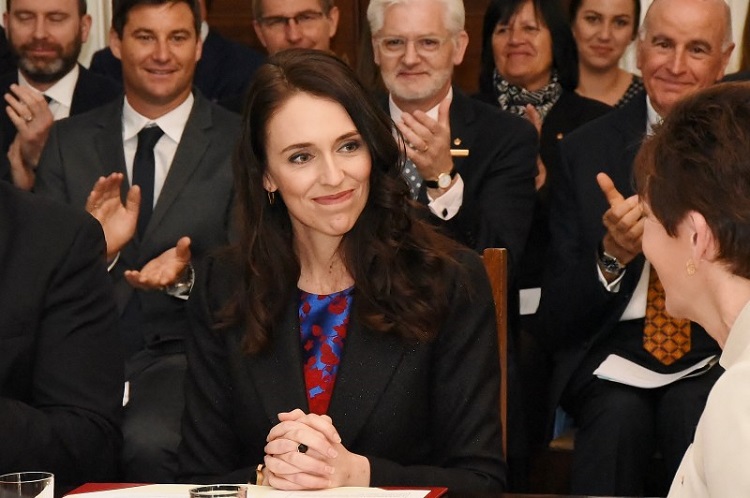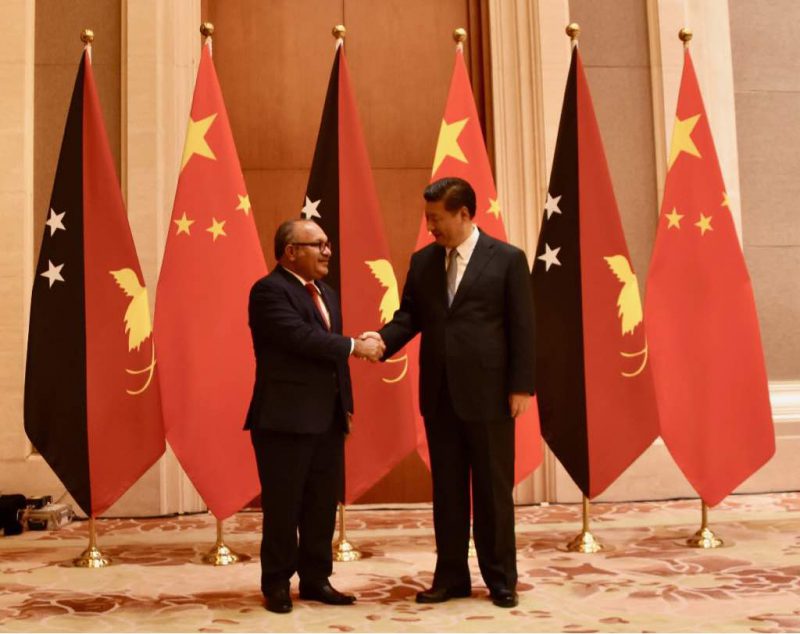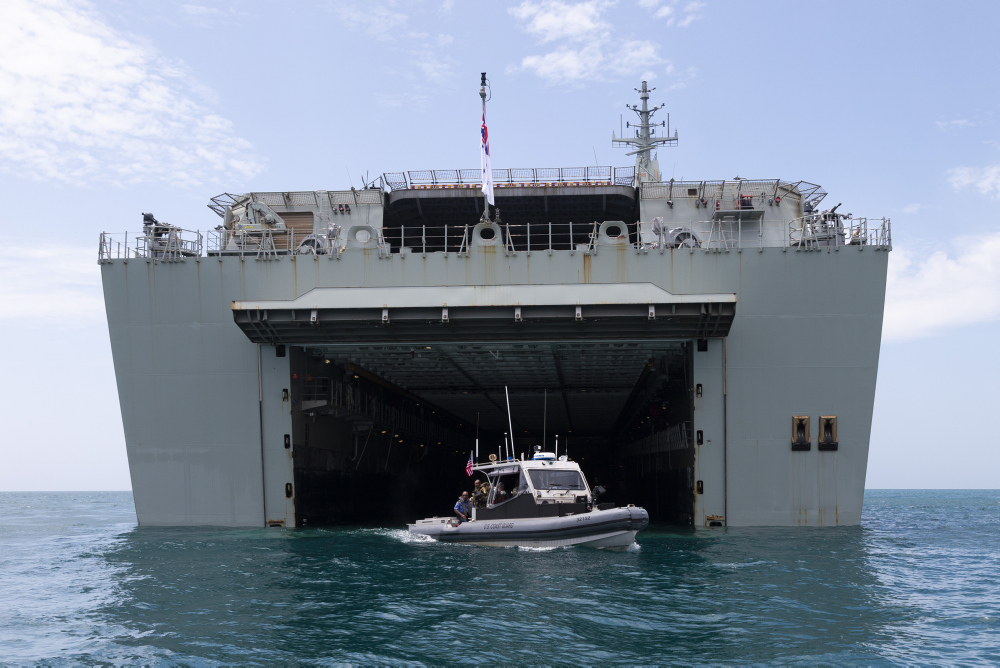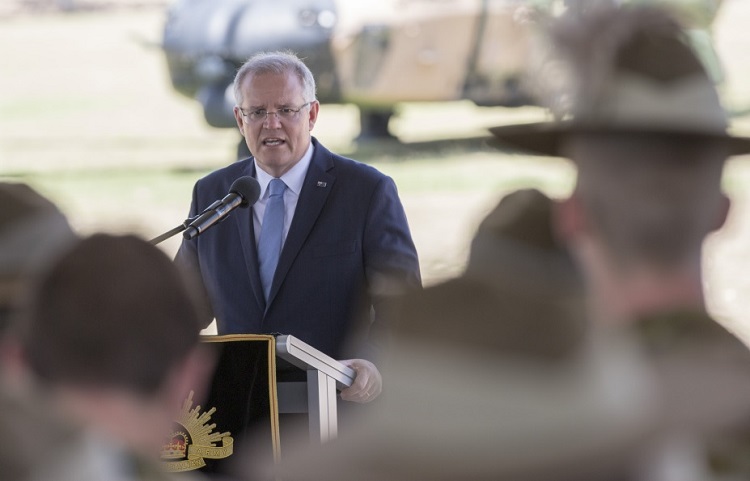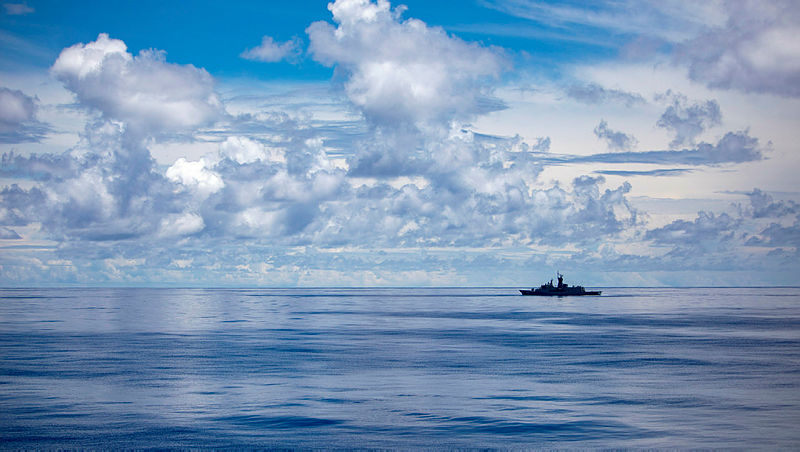Editors’ picks for 2018: ‘It’s time to get things straight with China’

Originally published 20 September 2018.
The relationship between the Australian and Chinese governments would benefit from a clearer declaration from Australia about what is and is not in our national interest in engaging with the Chinese state and economy.
This is a particularly timely requirement given that President Xi Jinping’s re-energised Communist Party has clarified the Chinese state’s intent and behaviour in ways that show that the time of its peaceful rise is over.
A declaratory policy is just a way of saying what you do and don’t want, and what you will and won’t do, so that others know what to expect and can shape their own policies and actions accordingly.
Such a clear policy can be implied from government decisions and statements and from laws passed by the Australian parliament. Rather than leaving it to be understood from the pattern of individual decisions, a statement setting it out simply would provide a framework to help manage future issues.
Without such a framework, each Australian decision can be characterised as a new ‘test’ of the bilateral relationship—whether on foreign investment, security or defence relations, or on whether to prosecute foreign interference or implement, say, the laws regulating research partnerships.
Each decision can look like a chance to send a message, or to give a little back if the previous one was maybe perceived as harsh. That creates the risk of an ad hoc transactional approach. Commentators and critics then read the tea leaves of each decision for symbolism about overall policy directions and the ‘state of the relationship’.
It makes everything a more febrile, exciting and open adventure than a more sober analysis would suggest. Great for the commentariat, but bad for government to government relations.
Let’s look at overall policy settings and big decisions on China and what declaratory policy flows from them. First on foreign investment and trade.
Australia is open for business. Our two-way trade with China focuses on resources, agriculture and services (notably tourism and education). This is mutually beneficial, as Australian businesses earn strong revenue and our Chinese customers receive world-class resources, goods and services at competitive prices.
But economists and strategists learned from the global financial crisis that it’s a mistake to carry too much risk in any asset area.
So, Australia will seek to diversify its economic and trade relationships to reduce its reliance on China as the single customer.
Trade diversification is an old strategy for Australia that’s becoming newly relevant. It was a major theme when the UK joined the European Economic Community—another example of our reliance on a large single customer being bad economics and bad strategy.
Peter Varghese’s India strategy sets out the contribution that a growing relationship with India can make to such diversification. Prime Minister Scott Morrison’s visit to Indonesia around the free trade agreement is another element of that strategy.
On investment, most foreign investment into Australia, whether from China or elsewhere, is approved by the Foreign Investment Review Board process. According to FIRB annual reports, in the 10 years to the end of 2016–17, four business proposals were rejected (two on Ausgrid, one on Graincorp and one on the ASX) and 169,178 were approved.
The small number of foreign investment decisions rejected (and others given a ‘preliminary view that they were contrary to the national interest’) from Chinese entities are important, however, in establishing a policy. Key examples are the Ausgrid decisions and the Kidman Holdings decisions. In the Ausgrid case, Chinese bids were rejected as contrary to the national interest.
In the case of Kidman Holdings, in April 2016 the then treasurer, Scott Morrison, gave his ‘preliminary view’ that the original bid from Dakang Holdings, a Chinese-owned entity, was contrary to the national interest. That meant that if it proceeded, it was very likely to be rejected. A new bid involving Gina Rheinhart and a Shanghai firm was accepted, with property straddling the sensitive Woomera Prohibited Area in South Australia excised from the transaction.
There’s little doubt that if the leasing of Darwin port was being decided in 2018, the Chinese entity Landbridge would not have got its 99-year lease.
On telecommunications infrastructure, the government has advised Australian telcos that suppliers subject to extrajudicial control by governments won’t be able to supply 5G systems within Australia. That has excluded Chinese telcos Huawei and ZTE.
Public statements on our approach to foreign investment review and critical infrastructure are reassuring about openness to investment and explain in detail that any rejections are decided case by case, subject to the nature of the asset and transaction, with no one-size-fits-all approach. That repeats the longstanding approach of testing all foreign investors’ proposals against Australia’s national interest.
But these public statements provide scant explanation of the few important rejections.
The sense I make of it—and which I’m sure the leadership in Beijing gets too—is that we’ve reached a point in Chinese investment in Australia’s critical infrastructure, energy and communications sectors where further aggregation and large market penetration by Chinese-owned entities is not seen as being in our national interest.
As with trade, this is probably as much about cumulative business risk from reliance on a single source of investment as it is about strategic interests. The net effect, though, looks pretty firm from a policy perspective. Let’s say so.
Second is the new foreign interference legislation. As Malcolm Turnbull said when he introduced it last December: ‘[Q]uestions of foreign interference are not all about China—far, far from it. Globally, Russia has been wreaking havoc across the democratic world.’
But it’s equally clear that events like the controversy over former senator Sam Dastyari, combined with testimony on the threat from foreign interference and covert influence by the head of ASIO, created the foundation for this legislation to be passed by both sides of politics.
The policy here is in the law itself. Quoting Malcolm Turnbull again: ‘Media reports have suggested that the Chinese Communist Party has been working to covertly interfere with our media, our universities and even the decisions of elected representatives right here in this building. We take these reports very seriously.’ He also said: ‘[W]e will not tolerate foreign influence activities that are in any way covert, coercive or corrupt. That is the line that separates legitimate influence from unacceptable interference.’
The only further clarity we could provide is to prosecute a Chinese national for covert interference or espionage. That may come, noting that both Russia and the US do often prosecute Chinese nationals for such things.
Lastly, there’s the issue of the defence relationship and the pursuit of capability advantage by the ADF and by the PLA. Here also there’s some clarity. We seek a defence relationship where we can engage each other to increase understanding, and we each seem willing to exercise together in ways that don’t give away real capability insights.
There’s no prospect of the Chinese giving us technological or intelligence insights into the PLA’s weapons systems, cyber capabilities or even strategic intent (apparently they don’t conduct cyber espionage for economic advantage now).
Similarly, Australia won’t share JORN over-the-horizon radar, CEA radar, or the joint strike fighter or future submarine technologies with the PLA. That’s because we are not allies and we have markedly different strategic interests. We each know that it’s not in either of our interests to advance the military reach and capabilities of the other. Again, let’s say so.
That will have consequences for research partnerships and for particular types of students in Australian universities. China would never allow Australia (or the US, Japan, France, Germany, the UK …) to put military or other national security individuals in its key military research institutions or in universities that are creating the next wave of technical advantage (with both civil and military applications).
Australian policymakers, universities and the public need a much clearer, more honest and intellectually rigorous discussion about what the Chinese military and the research community tied to that military are seeking to achieve here and in other nations through their research partnerships and student placements.
To date, the Defence Trade Controls Act 2012 seems to have resulted in not one refusal of a research proposal involving the Chinese military on national security grounds, maybe because it relies on universities’ self-assessment of national security risk.
Doctoral and post-doctoral researchers from China who have access to cutting-edge research in STEM that has military applications will apply that knowledge for PLA purposes. We’re fooling ourselves if we think that PLA students studying explosives technologies or quantum computing would be doing so for peaceful purposes.
Given Xi’s agenda of using civil–military fusion to create strategic and military strength through next-generation technologies, it’s hard to see that research partnerships contributing to the PLA’s capability agenda are in our national interest.
A clear declaratory policy on China around economics and security would look a bit like this:
- We want to continue our close and growing economic relationship because it’s to both countries’ benefit. We get high-quality resources and education and tourist services at competitive prices. We get revenue and economic activity that’s important to our society.
- We gradually diversify our economy to reduce the business and strategic risks from relying too heavily on a single country. That will make us a more resilient economic partner.
- We welcome debate and exchanges of views as part of our politics and national decision-making. However, we won’t tolerate foreign influence activities that are in any way covert, coercive or corrupt.
- On investment in critical infrastructure, energy and telecommunications, we’ve reached a point of cumulative investment where further large-scale investment by Chinese entities isn’t in our national interest.
- We’re in favour of defence cooperation, but only as a reflection of shared strategic interests.
- We’re happy to engage in a defence relationship that increases understanding of each other’s intent and creates habits of communication so that tensions can be resolved and the prospects of conflict between us reduced.
- We won’t help China increase its military capabilities because we’re seeing that how it is beginning to use them, most obviously in the South China Sea, isn’t in the interests of Australia or the region. Here, our countries’ strategic interests are in direct tension, given the direction of Chinese policy and action.
- We also don’t support plans to create military advantage for the PLA through next-generation technologies, so our economic and research interactions will have limits in that key area.
- Overall, we seek a mature, respectful relationship between our nations, in ways that enhance the prosperity and security of our region and the world. Clarity on where our interests work together—and where they don’t—is an important step in building this relationship.
If such a declaratory policy were in place, Australian ministers wouldn’t be as hostage to pressure (as much from the various wings of Australia’s commentariat as from Chinese authorities) on individual decisions.
As an example, the treasurer’s forthcoming decision on the bid by CKI holdings to acquire a large stake in Australian electricity and gas distribution systems would already be clear—and future such bids would be unlikely.
Let’s take the heat, light, noise and excitement out of the relationship by establishing a clear, declared policy that governs our approach to the economic and strategic relationship with the Chinese state. It won’t be new news to Beijing and the CCP leadership, but it will make our government’s deliberations and public statements easier.
It will also be a welcome relief to both sides of politics to have a clear bipartisan approach.
This may well encourage similar clearer declarations from other nations facing similar tensions and competing interests in their own relationships with the Chinese state and economy.

